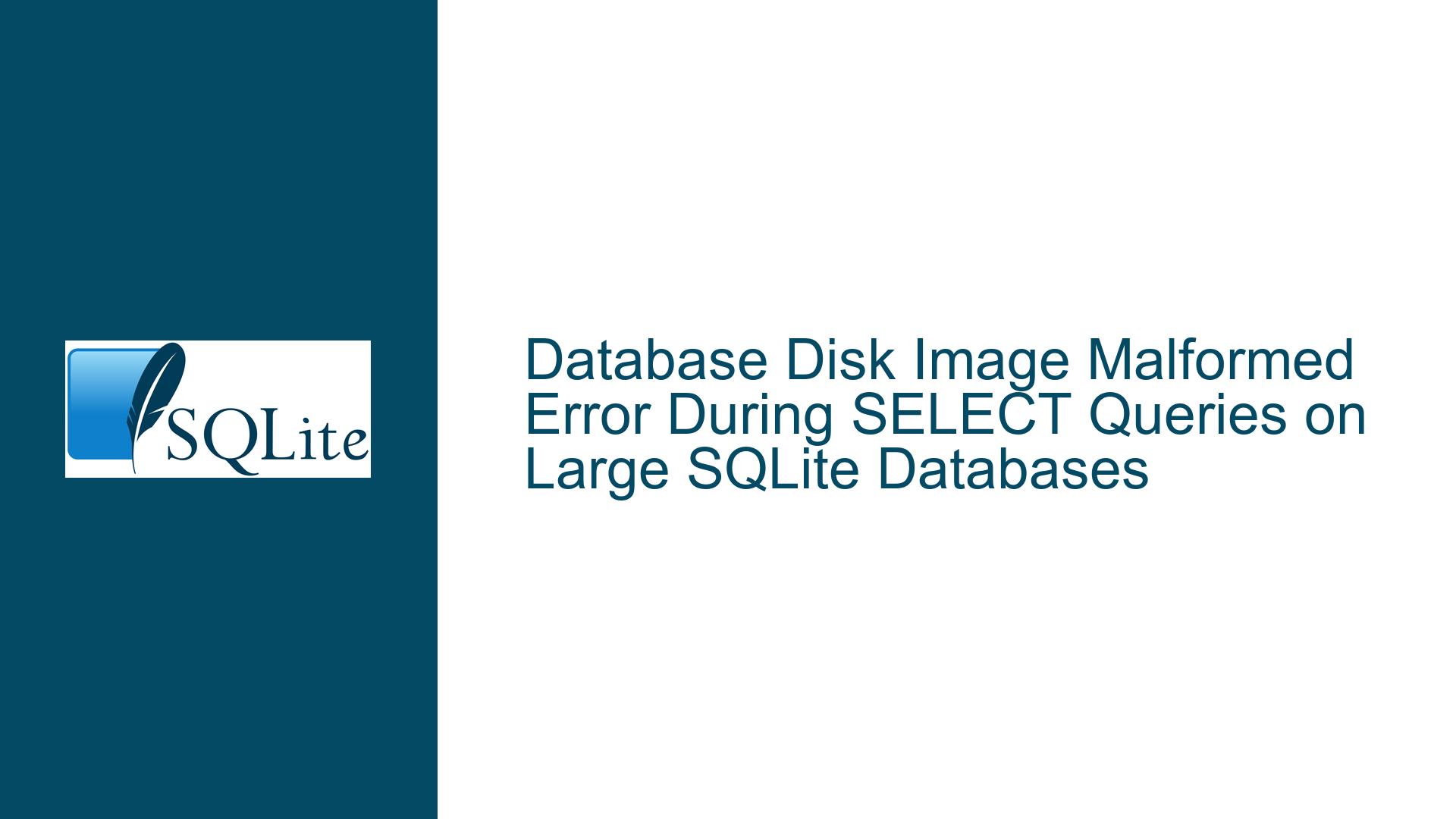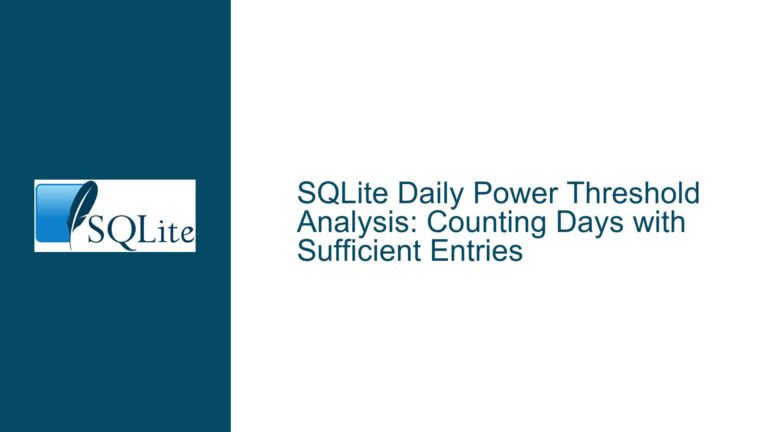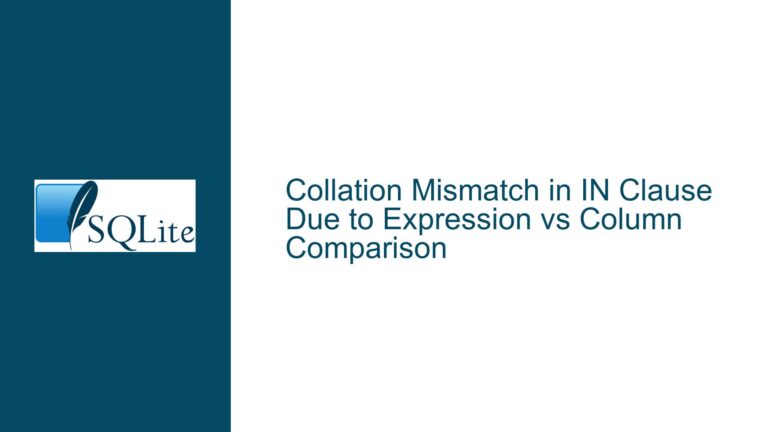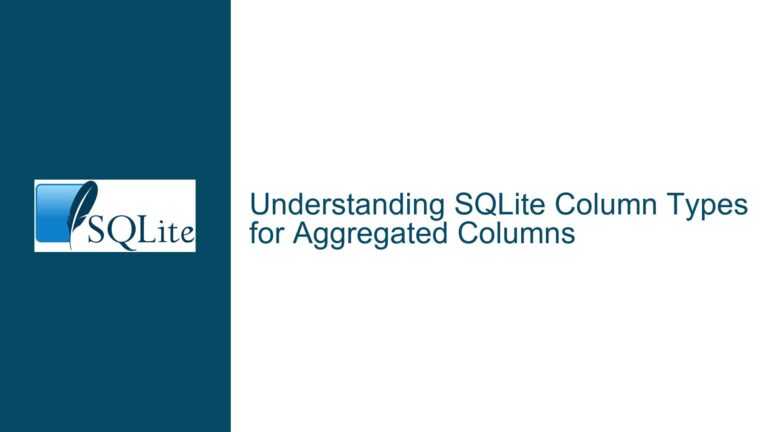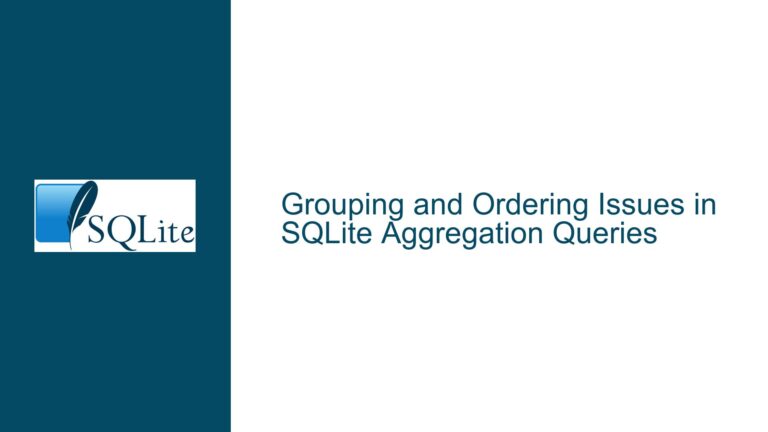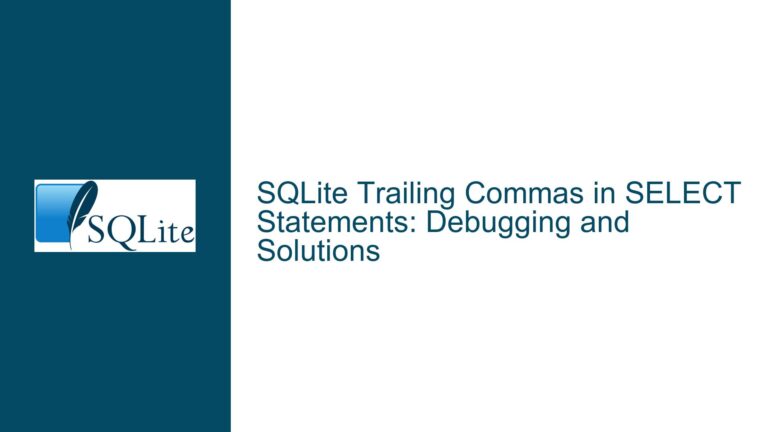Database Disk Image Malformed Error During SELECT Queries on Large SQLite Databases
Issue Overview: Database Corruption During SELECT Queries on Large Databases
The core issue revolves around a recurring "database disk image is malformed" error that occurs during SELECT queries on large SQLite databases. The databases in question range from 280MB to 1.2TB in size and contain a single table with seven columns, including a text primary key and six numeric columns. The table is indexed extensively, with indexes on all numeric columns and two composite indexes involving multiple columns. The databases are created using a Python script, and the corruption manifests after a few SELECT queries are executed within the SQLite shell. Notably, the issue does not occur on smaller databases (~20GB), suggesting a correlation between database size and the likelihood of corruption.
The error is consistent across multiple desktops running Ubuntu 20.04 with the ext4 file system, despite using different internal drives (Intel and Samsung SSDs). This rules out the possibility of a single faulty storage device being the root cause. The corruption appears to worsen with repeated SELECT queries, even though SELECT operations are read-only and should not modify the database file. The timestamp on the database file remains unchanged, further indicating that the corruption is not due to external writes. The problem persists even after restoring from a backup, making the database increasingly unusable over time.
Possible Causes: Storage, Indexing, and SQLite Internals
The first potential cause to consider is storage device integrity. While the issue occurs across multiple drives, it is still possible that the SSDs are exhibiting subtle hardware faults that lead to data corruption. SSDs, especially those with high write endurance, can develop issues over time, such as bad blocks or firmware bugs, which might cause silent data corruption. However, the fact that the problem is consistent across different drives from different manufacturers makes this less likely, though not impossible.
Another plausible cause is related to SQLite’s indexing mechanism. The database in question has multiple indexes, including composite indexes, which could be contributing to the corruption. Indexes in SQLite are stored as B-trees, and any corruption in these structures could lead to malformed database errors. The SELECT query that triggers the error uses an index on the amylogen column, and the PRAGMA quick_check confirms that this index is well-formed. However, the PRAGMA integrity_check has not yet completed, leaving open the possibility that other parts of the database, such as unused indexes or table structures, might be corrupted.
A third possibility is related to SQLite’s internal mechanisms for handling large databases. SQLite is designed to handle databases up to 140TB in size, but performance and stability can vary depending on the underlying file system, operating system, and SQLite version. The databases in question are large (up to 1.2TB), and the ext4 file system, while generally robust, might have limitations or bugs that manifest under heavy load or with large files. Additionally, the SQLite version being used (3.31.1) is not the latest, and it is possible that the issue has been addressed in subsequent releases.
Finally, the issue could be related to the way the database is being accessed or the specific queries being executed. While SELECT queries are read-only, they can still trigger internal operations such as index scans, which might expose underlying corruption. The fact that the error occurs consistently after a few SELECT queries suggests that the corruption might be latent and only becomes apparent under certain conditions, such as when specific indexes are accessed or when the database reaches a certain size.
Troubleshooting Steps, Solutions & Fixes: Diagnosing and Resolving Database Corruption
To diagnose and resolve the issue, a systematic approach is required. The first step is to confirm the integrity of the database using PRAGMA integrity_check. This command performs a thorough check of the entire database file, including all tables, indexes, and free pages. Given the size of the database, this process can take a significant amount of time (potentially over 24 hours), but it is essential to identify any underlying corruption. If the PRAGMA integrity_check reveals issues, the next step is to determine the extent of the corruption and whether it can be repaired.
If the PRAGMA integrity_check does not reveal any issues, the next step is to examine the specific query that triggers the error. The query in question is a simple SELECT statement that counts rows where the amylogen column is less than 0.5. The EXPLAIN QUERY PLAN output shows that this query uses the id_amylogen index, which is confirmed to be well-formed by the PRAGMA quick_check. However, it is possible that other parts of the database, such as unused indexes or table structures, might be contributing to the corruption. To test this hypothesis, the unused indexes should be dropped, and the database should be vacuumed to remove any unused space and reorganize the data.
If dropping unused indexes and running VACUUM does not resolve the issue, the next step is to consider upgrading to the latest version of SQLite. The current version being used (3.31.1) is over two years old, and several bugs and performance improvements have been made in subsequent releases. Upgrading to the latest version might resolve the issue, especially if it is related to SQLite’s internal mechanisms for handling large databases.
If the issue persists after upgrading SQLite, the next step is to examine the underlying file system and storage devices. While the issue occurs across multiple drives, it is still possible that the file system or storage drivers are contributing to the corruption. Running a file system check (e.g., fsck on ext4) and checking the SMART status of the drives can help identify any underlying issues. Additionally, testing the database on a different file system (e.g., XFS or Btrfs) or operating system (e.g., a different Linux distribution or Windows) might provide further insights.
Finally, if none of the above steps resolve the issue, it may be necessary to involve the SQLite development team for further debugging. Providing them with access to a machine that exhibits the issue, as suggested by Richard Hipp, would allow them to perform a detailed analysis and potentially identify a bug or edge case that is causing the corruption. In the meantime, it is recommended to continue using backups and to monitor the database for any signs of further corruption.
In conclusion, the "database disk image is malformed" error during SELECT queries on large SQLite databases is a complex issue that requires a thorough and systematic approach to diagnose and resolve. By following the steps outlined above, it is possible to identify the root cause of the corruption and implement a solution that ensures the stability and reliability of the database.
